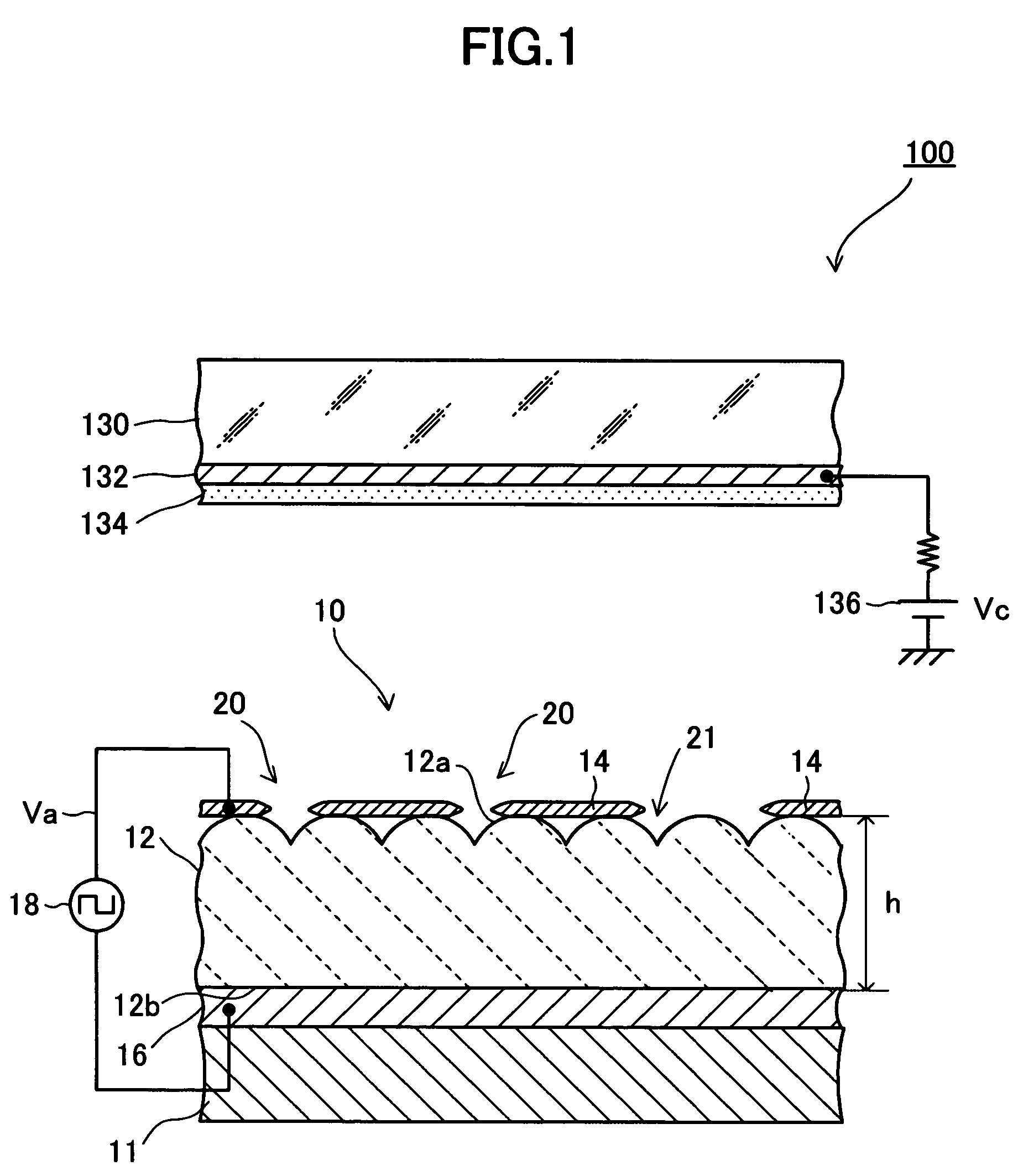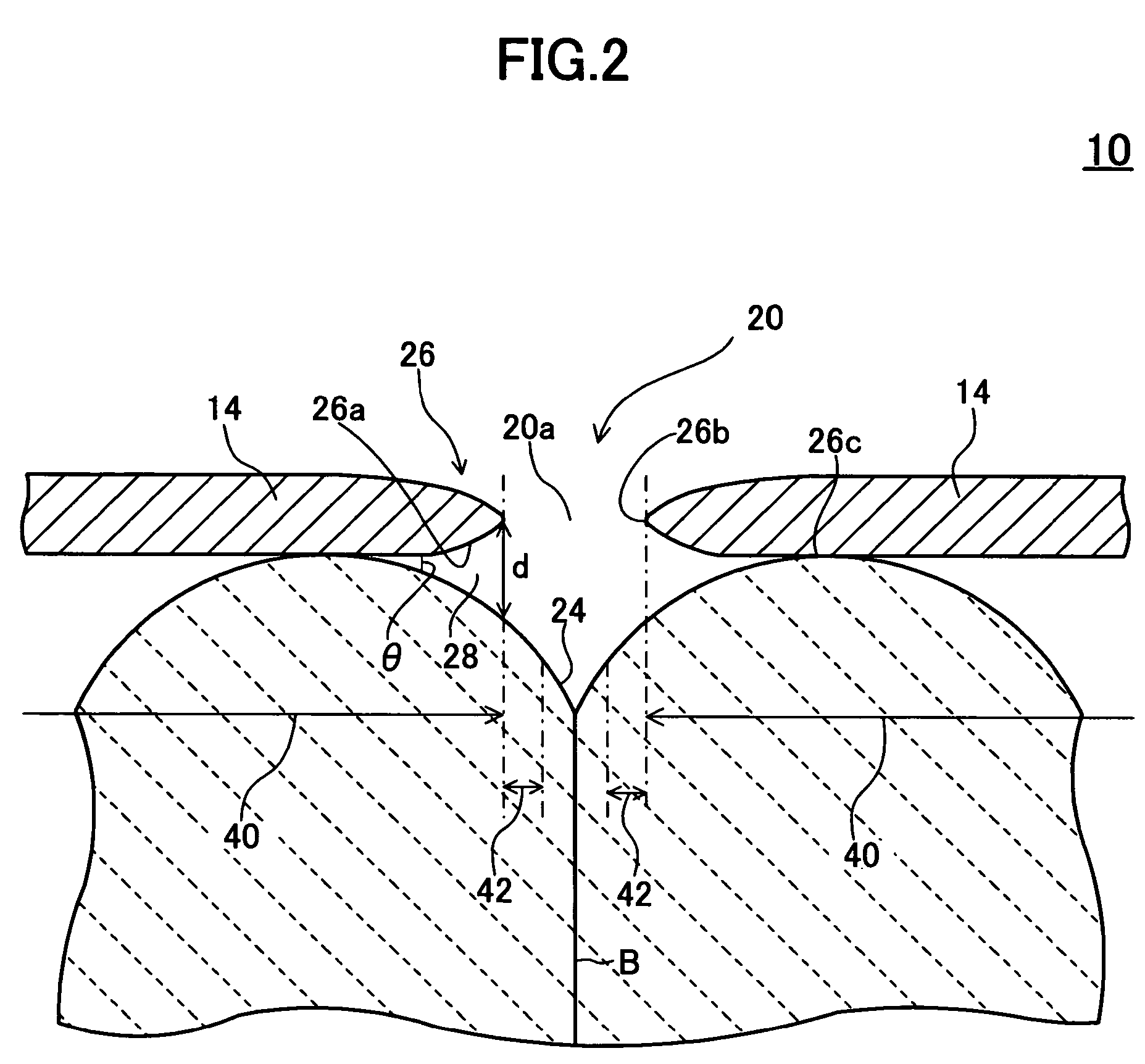Electron emitter formed of a dielectric material characterized by having high mechanical quality factor
a dielectric material and mechanical quality technology, applied in the manufacture of electrode systems electric discharge tubes/lamps, etc., can solve the problems of high cost, high cost, and complicated process of producing the electron emitter per se, so as to reduce the drive voltage, enhance the production yield, and ensure the effect of electron emission performan
- Summary
- Abstract
- Description
- Claims
- Application Information
AI Technical Summary
Benefits of technology
Problems solved by technology
Method used
Image
Examples
example 1
[0100]The first electrode 14 was formed by applying Pt / LSCO (Pt resinate containing 1 wt. % LSCO) onto the front surface 12a of the emitter section 12 through screen printing, followed by heating. The emitter section 12 was formed of a dielectric material containing 35.5PMN-39.5PT-25PZ as a primary component and containing MnO2 in an amount of 0.6 wt. %. The Qm of the dielectric material was 1,074.
example 2
[0103]In Example 2, the first electrode 14 was formed by mixing organometallic compounds such that the proportions by weight of Pt / Au / Ir was 93.0 / 4.5 / 2.5, and by subjecting the resultant mixture to screen printing and heating. In Example 2-1, the emitter section 12 was formed of a dielectric material having a Qm of 1,074, which is the same as the dielectric material employed in Example 1. In Example 2-2, the emitter section 12 was formed of a dielectric material containing, as a primary component, 37.5PMN-25PT-37.5PZ in which the amount of Pb substituted by Sr is 8 mol %, and containing MnO2 in an amount of 0.2 wt. %. The Qm of the dielectric material was 508.
PUM
| Property | Measurement | Unit |
|---|---|---|
| thickness | aaaaa | aaaaa |
| thickness | aaaaa | aaaaa |
| thickness | aaaaa | aaaaa |
Abstract
Description
Claims
Application Information
 Login to View More
Login to View More - R&D
- Intellectual Property
- Life Sciences
- Materials
- Tech Scout
- Unparalleled Data Quality
- Higher Quality Content
- 60% Fewer Hallucinations
Browse by: Latest US Patents, China's latest patents, Technical Efficacy Thesaurus, Application Domain, Technology Topic, Popular Technical Reports.
© 2025 PatSnap. All rights reserved.Legal|Privacy policy|Modern Slavery Act Transparency Statement|Sitemap|About US| Contact US: help@patsnap.com



